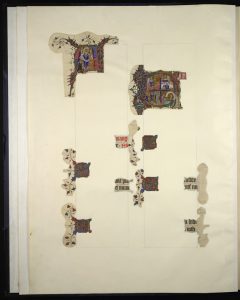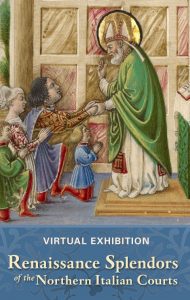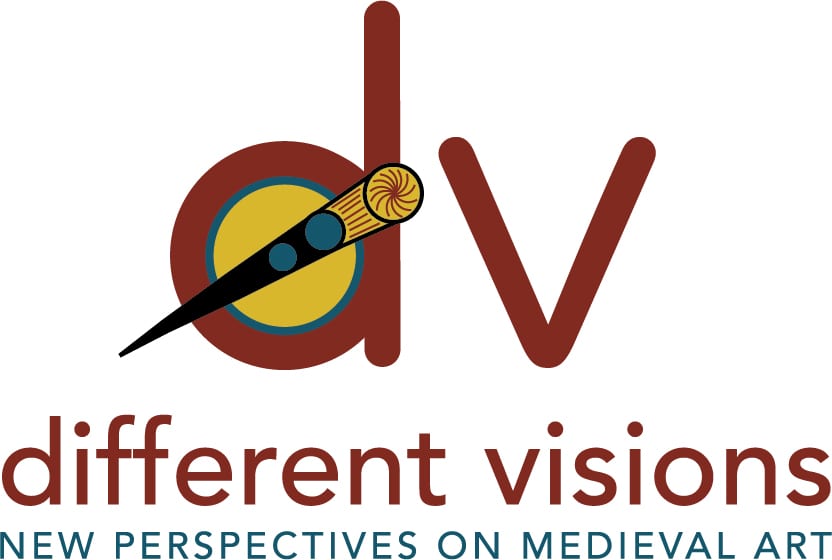
I take my title from the Pixar film “The Incredibles,” which was a very popular movie night selection in my house when my two children were younger. As I’m sure any of you with kids of a certain age are aware, the Incredibles are a family of super-heroes who are forced to go undercover and live normal lives in the everyday suburban world. The superpower of the young son Dash is super speed, but his mother tells him that he is not allowed to go out for sports for fear that he’ll beat everyone. “But our powers make us special!” Dash argues. “Everyone is special, Dash,” counters his mother. Dash responds, “Which is another way of saying that no one is.”
So what does this have to do with medieval manuscripts? In this blog post I will muse about the way that new technologies, including the digitization of manuscripts, and new commitments to open access among libraries and museums, have affected the study of medieval manuscripts. Manuscript studies has always been a rarified field, with material that is difficult to access since it is typically on a shelf or in a vault rather than on view, necessitating travel, academic credentials, and a good visual memory, the latter particularly important since manuscripts were rarely photographed in their entirety, and certainly not in full color. Since few people had a pathway into this esoteric world of hushed libraries, book cradles, and pencils, the possibility always existed of new discoveries, of things that had never been noticed, connections that had never been drawn, entire manuscripts that had never been examined. With digitization, such experiences are apt to become more and more rare, as access to manuscripts becomes more and more democratic. Everyone is special — anyone with a computer and an Internet connection now has access to thousands and thousands of manuscripts, searchable in a myriad of ways. But is it true that if everyone is special, then no one is? Is something lost when manuscript studies becomes mainstream?
There has truly been an explosion of technology in recent years, allowing for rich and productive ways of viewing and studying manuscripts. Libraries and museums are digitizing their manuscript collections in increasing numbers (as just one example, the British Library has digitized many of its manuscripts: https://www.bl.uk/manuscripts/). These days, most conferences include sessions on Digital Humanities, including presentations on the ever-increasing number of digital resources, and the ways that technology can aid in manuscript studies. For example, OPenn, the University of Pennsylvania’s open-access site, “contains complete sets of high-resolution archival images of cultural heritage material from the collections of its contributing institutions, along with machine-readable descriptive and technical metadata” (http://openn.library.upenn.edu/), and it will house Biblioteca Philadelphiensis, a project which at its completion will have digitized manuscripts in the entire greater Philadelphia area. There are more and more searchable resources like the Schoenberg Database of Manuscripts, or the Digitized Medieval Manuscript app.

While I have certainly utilized various databases, and benefited from the increasing access to manuscripts that have been digitized and placed online, I really began to think about the issue of manuscripts study and technology when I was asked to write a book review for H-France Review of the I-book The Visions of Tondal from the Library of Margaret of York, by Thomas Kren and Roger Wieck (http://www.h-france.net/vol14reviews/vol14no102easton.pdf). It includes the essays that were part of the original 1990 print publication, and it also includes the complete manuscript, which allows the user to turn, virtually at least, each folio, by swiping left and right, interacting with the manuscript in ways that had only been possible when actually handling the book (http://www.getty.edu/mobile/visionstondal.html.) Presenting a manuscript in digitized form has many benefits; the cost of production is reduced for the publisher, and the purchase price is affordable for the consumer, particularly since high-quality facsimiles of illuminated manuscripts are stratospherically expensive. Digitizing manuscripts also means increased access; the entire manuscript, rather than the select folios presented in a museum setting or in a more typical publication, can be made available, and to a broader audience.
As remarkable as all these new technological innovations may be, there are a few downsides. So at first, let me wax nostalgic for the old way of studying manuscripts. Digitized manuscripts can be viewed without the stress that physical handling places on the real thing, and so paradoxically, the broad access to manuscripts afforded by virtual technology will in turn most likely restrict access to actual physical objects, even to scholars. Is something lost in the process? One could argue that a manuscript is more than just images and words on a page; there are details and subtleties that are apparent only when they are seen in person. While bindings can be described, the quality and thickness of the parchment detailed, and lacunae, stubs, and other such features noted, the sense of scholarly exploration, to say nothing of personal revelation, could be compromised when a manuscript is viewed only in digital form. The researcher is reliant on the quality of the digital images, and the thoroughness of the entered data – but what if the researcher is looking for something that can’t be seen in the virtual copy, and is not described? Early manuscript cataloguers often ignored information that was not deemed relevant at the time they were writing their descriptions, and thus it was left to later scholars to recover and reveal marginal illumination, for example. The researcher may be examining the manuscript for things like signs of use, or deliberate defacing. They may be interested in pin pricks, or bits of thread left from vanished image covers, or erasures that can only be seen under ultraviolet light. Or things that they didn’t know that they were looking for until they found them.
And what about the more personal experiences of manuscript study? For me, working with manuscripts evokes two things – travel and touch. Since I live in the mid-Atlantic region, I do not need to travel far to view incredible medieval manuscripts, and I have certainly seen my fair share of manuscripts on display in museums and libraries, like so many butterflies pinned into position under glass. But what I really want to do is to have those manuscripts to myself, away from the public, to take my time and embark upon my own personal voyage of discovery. Often such an intellectual voyage begins with an actual one, a plane trip to a far-away location. For my dissertation research alone, I visited numerous museums and libraries in several different countries. So the memories of working with manuscripts become intertwined with evocations of place. I remember the roasted tomatoes of the Scottish breakfasts I ate to fortify me before my long days of working in Special Collections at the University of Glasgow, and the bars erupting after a World Cup soccer match. I remember my jogging route through the Tuileries, during the summer I spent working at the Bibliothèque Nationale de France. I remember the pastries in Vienna, and the beer in Munich, and the pigeon that shat on me in Oxford. And the six weeks I spent in San Marino, California, working with the subject of my dissertation, the Huntington Library Legenda aurea (HM 3027) will forever evoke the memory that I was hugely pregnant at the time, and somehow I had to figure out how to study the manuscript without my expanding stomach getting in the way.
But the most exciting part of all those trips is that I got to touch those manuscripts, to turn the folios and feel the vellum. While the viewer of the digitized manuscript might be able to turn the folios virtually, approximating a physical interaction with the book and its pages, it can never be the same as the intimate flesh-upon-flesh experience of fingers touching parchment. Angie Bennett Segler and Jennifer Borland, among others, have described the nearly erotic experience of handling actual manuscripts.[1] There is something about the heft and feel, something about the very materiality and tactility of the manuscript, which connects our experience to that of previous users and viewers of the same physical object. With the manuscript as our shared vehicle, we can make a visceral connection with the people from the past – the parchment-makers, the scribes, the artists, the owners. My touch is but one in a chain of touches. It seems to me somehow ironic, or perhaps it is completely understandable, that in a methodological moment when we are privileging the object – through thing theory, through object-oriented ontology, through groups such as the Material Collective – at this very same time technology is moving us farther away from the object. We deal with pixels instead parchment, skin upon screen instead of skin upon skin. Swipe left, swipe right – Tinder for quick manuscript hook-ups, temporary love affairs that end as soon as the Internet connection is broken or the computer is closed.
We are living in an increasingly virtual world – virtual reality, virtual relationships, virtual manuscripts. And as Kerr Houston suggested in a previous blog post for the Material Collective, our increasing engagement with digital technology means that the sensory experience of interacting with digital devices provides its own sort of visceral satisfaction (http://thematerialcollective.org/surface-substance/). Yet in the end, as authentic-looking as these substitutes are, as accessible as it makes the experience, a manuscript that is presented in a facsimile, on an Ipad, or in a database can never really approach the actual materiality of the original. In the end, they are ephemeral copies. Because of the problems with maintaining digital resources, particularly the need to continually transfer digital information from one platform to another as technology changes or becomes obsolete, scholars working on digital projects must accept that their projects will most likely not survive. Certainly manuscripts themselves are subject to movement; by the very nature of their portability, unless they are still chained in a monastic library, manuscripts very often exist outside their original contexts.

The Carmelite Missal, British Library
They are also subject to the ravages of time, disasters both natural and human, from the lost library of Alexandria to the burning of books in Mosul by ISIS. They may be cut up by children (as in the famous case of the Carmelite Missal, now British Library Add. Ms. 28704-5, 44892), or by unscrupulous dealers who break manuscripts in order to sell individual leaves. But barring calamity, their very physicality is not at risk, in the way that the evolution of technology and the breakdown of data make digital projects susceptible to disappearance.
But perhaps all this hand-wringing over the demise of traditional manuscript studies is somehow overwrought. Perhaps by clinging to the manuscript-as-object we are privileging the authentic, the original, in all its Benjaminian aura. We are already familiar with dealing with material that is one step removed from the original, through the manuscript facsimile. Michael Camille bemoaned the lack of scholarly access to the Très Riches Heures; its availability in facsimile form meant that the original became a “lost prototype.”[2] It is worth remembering, however, that those of us who study medieval manuscripts deal with materials from a time when the aura of the prototype often extended to its reproduction. Thus certain images of the Virgin, understood as derived from St. Luke’s portrait of the Virgin, have their own form of authenticity as images that reproduce, and are therefore imbued with, the essence of the holy. After all, manuscripts are themselves very often copies, facsimiles, hearkening back to a model, whether it be a monk-copied work of theology, a Book of Hours with codified iconography and standardized prayers, or Carolingian transcriptions of antique texts that, while copies, have appropriated a position of authority since the original texts no longer survive.

While we may lose the ability to handle original manuscripts, technology can profoundly enhance the way we understand them. Digitized manuscript collections, especially those with open access policies, allow both scholars and the general public the opportunity to search and explore manuscripts in a myriad of ways, and the big data that can be mined from such databases can be revelatory, allowing researchers to search, organize, and manipulate information with a convenience and speed which is almost unfathomable. Ipads loaded with digitized manuscripts mean that they can be viewed more comprehensively, beyond a single opening – and that they can be enjoyed by everyone, not just those with academic credentials and a travel stipend. Virtual exhibitions, such as “Renaissance Splendors of the Northern Italian Courts” at the Getty, with gorgeous high-res images, can be viewed either in conjunction with on-site exhibitions, or entirely on their own. Not only are such exhibitions accessible in a digital sense, they are also a godsend for someone like my own mother, who is disabled and can no longer easily get to an actual physical museum.
Digital projects seem to be particularly well-suited for, to even demand, collaboration. At times when interdisciplinarity can sometimes seem to be no more than a buzzword, such endeavors often truly are partnerships between people with diverse skill sets. As just one example, the wonderful “Opening the Geese Book” project, spearheaded by Corine Schleif and Volker Schier, is a joint effort involving art historians, musicians, musicologists, web designers, computer programmers, actors, conservators, and a host of other experts.
So while something is lost – the personal interaction with the object, the potential for secret discovery – much more has been gained. The rich world of medieval manuscripts is opening to a wider audience, and with that comes the possibility of a pooling of knowledge, of collaboration, of shared purpose. In a political moment, both in medieval studies and in the larger world, where gatekeepers vie to restrict access to others, whether those borders are academic, geographic, or personal, we must always advocate for freedom, for diversity, for equality, for accessibility, for inclusion. Because in the end, everyone IS special.
References
| ↑1 | See Angie Bennett Segler, “Touched for the Very First Time: Losing my Manuscript Virginity,” in Transparent Things: A Cabinet, eds. Maggie M. Williams and Karen Eileen Overbey (Brooklyn, NY: punctum books, 2013) https://punctumbooks.com/titles/transparent-things/; Jennifer Borland, “Unruly Reading: The Consuming Role of Touch in the Experience of a Medieval Manuscript,” in Scraped, Stroked, and Bound: Materially Engaged Readings of Medieval Manuscripts, ed. Jonathan Wilcox (Turnhout: Brepols, 2013), 97-114. |
|---|---|
| ↑2 | Michael Camille, “The Très Riches Heures: An Illuminated Manuscript in an Age of Reproduction,” Critical Inquiry 17.1 (Fall 1990): 72-107. |
